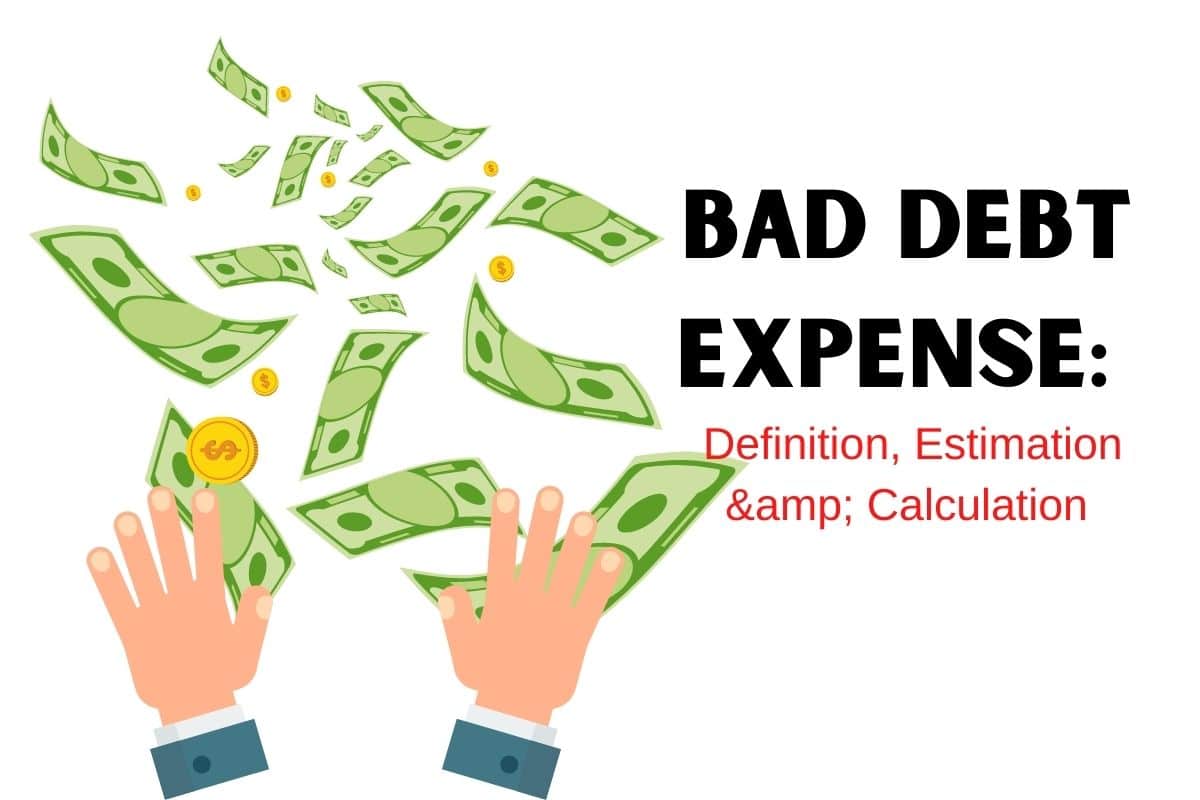The top Roth IRA accounts allow employees to save after-tax funds for retirement while avoiding expensive fees. Nevertheless, choosing a provider might be difficult because so many organizations offer Roth IRA accounts with identical benefits.
We examined the top Roth IRAs available today based on characteristics such as investment alternatives, educational resources, fees, and minimum account investment/balance requirements to help you accomplish your retirement objectives.
The Roth IRA providers we’ve featured below stand out from the crowd due to their cheap recurring expenses, diverse investment possibilities, and convenience with which you can start an account.
Overview
The Roth IRA is a new and useful way to save money for retirement. Because you won’t have to pay taxes on withdrawals from this type of IRA, you’ll have more freedom to plan for taxes in retirement.
Since they came out in 1998, Roth IRAs have been a great way for retirees to spread out their taxable income. Since contributions to a Roth IRA are made with money that has already been taxed (you don’t get a tax break), withdrawals in retirement are also not taxed.
Changes to tax laws won’t have any effect on the money you get from your Roth IRA when you retire. If you expect to be in a higher tax bracket when you retire, tax-free withdrawals from a Roth IRA could be a good way to supplement your retirement income.
You can make your retirement planning even stronger by combining the tax benefits of a Roth IRA with a robo-advisor or broker that has better planning tools and reporting features. I researched to find out which banks have the best Roth IRA accounts by comparing their fees, account minimums, goal-setting tools, retirement calculators, and investment opportunities.
Investing in stocks and bonds, for example, can be done through brokerages and robo-advisors. Over time, the returns on these investments could be much higher, but they are not protected against loss. In contrast to a CD, where your annual return is guaranteed, the returns on the assets below can change, and often by a lot.
Fidelity Investments
Fidelity Investments is our overall winner because it provides self-directed and managed Roth IRA choices with no yearly account fees, no needed minimum balance, and a diverse range of investment options.
The retail Roth IRA from Fidelity is a self-directed account in which you may make your own investing decisions. In addition, you will have access to planning tools, research, and 24-hour help from Fidelity professionals. Although there are no account or advisory fees, some assets may have underlying fees that you should be aware of before investing.
In contrast, the Fidelity Go Roth IRA offers discretionary investment management based on your risk tolerance and knowledge. You gain access to digital planning tools and 24/7 customer care, as well as unlimited one-on-one calls with a dedicated Fidelity advisor once your account hits $25,000.
For account balances under $25,000, Fidelity’s Go Roth IRA does not incur advisor fees. For accounts worth more than $25,000, it charges a 0.35% yearly advisory fee.
Fidelity features tools such as an IRA Contribution Calculator and educational resources to assist you in planning for retirement. You’ll also get Fidelity’s user-friendly online interface, which allows you to easily investigate and track your assets over time.
In addition to retirement accounts, Fidelity offers wealth management services, including access to financial consultants for accounts above $50,000, which may be appealing to those seeking a more hands-on approach. Fidelity also provides brokerage accounts with no commissions for online stock, ETF, and options trades in the United States.
Charles Schwab
Charles Schwab is a noteworthy brokerage business for starting a Roth IRA due to its extensive array of investment products and accounts, as well as individualized financial assistance.
It is a well-known brokerage firm that makes it simple to start a Roth IRA online by requiring no minimum account deposits and charging no yearly account maintenance fees.
Stocks, bonds, ETFs, CDs, mutual funds, and certain cryptocurrencies are among the investing options available through Charles Schwab. It also provides robo-advisors, automated retirement income solutions, and access to trained financial consultants as portfolio management options.
As a customer, you also have access to retirement planning tools, services, and in-person assistance at over 300 Charles Schwab locations across the country.
Schwab’s robo-advisor alternatives, known as Schwab Intelligent Portfolios, provide automated investing with 24/7 live service and no advisory fees or charges, although a $5,000 minimum commitment is required.
The premium version also includes interactive planning tools and advice from a licensed financial advisor. The latter, on the other hand, requires a minimum of $25,000 and has a $300 one-time planning cost plus a $30 monthly advising fee after that.
Merrill Edge
Merrill Edge distinguishes itself from other brokers by providing new account holders with a competitive cash bonus of up to $600.
They have cheap fees and a sizable sign-up bonus. Nevertheless, there are some conditions to this offer: you must make a qualifying deposit of at least $20,000 to your new account within 45 days of opening it, and you must keep the deposit intact for 90 days.
The cash incentive is decided by the amount you deposit and might range between $100 and $600. To get the highest cash reward, a deposit of $200,000 or more is required.
While there are no account fees for online stock and ETF trades, options trades include a $0.65 per contract fee.
If you have a Bank of America account, integrating your Merrill Edge brokerage account to your Bank of America account will be a seamless process, and you will be able to watch its performance on the same dashboard. You’ll also get quick transfers when moving money across accounts, which can take a few days with other banks.
Furthermore, if you keep $20,000 or more in your Merrill brokerage account, you may be eligible for Bank of America’s Preferred Reward program, which offers rate discounts on various loan products as well as rate increases on credit card rewards and savings accounts.
ETRADE
ETRADE entered our list of best Roth IRA accounts because of its cheap trading fees, which may appeal to active investors.
E*TRADE charges no commissions on most investment options, including stocks, ETFs, and bonds listed on the New York Stock Exchange. It also offers no-load and no-transaction-fee access to over 6,500 mutual funds. Options, on the other hand, start at $0.50 per contract, whereas futures are $1.50 per contract.
This account also has no minimum account balance requirements, and E*TRADE’s online trading platform makes it simple to access live market data and analysis.
E*TRADE also features a huge library of educational information and tools, including a “Knowledge” area that covers the fundamentals of investing as well as advanced trading and tax planning guidance.
In addition to self-directed accounts, E*TRADE offers Core Portfolios, which are automated managed portfolios. They have a $500 minimum account balance and a 0.30% yearly flat fee.
E*TRADE, unlike other auto-investing alternatives, provides you with access to a team of specialists as well as tax-sensitive portfolios.
You can also choose socially responsible investments and tailor your portfolio to your financial condition, ambitions, and risk tolerance.
Vanguard
Vanguard can be an outstanding Roth IRA option with over 200 commission-free ETFs and mutual funds to pick from, a straightforward robo-advisor, and a history of zero to low costs.
It is a low-cost robo-advisor system that allows you to create ETF-only portfolios depending on your risk tolerance and current savings. Its algorithm manages and adjusts the investment mix as needed to help you achieve your objectives.
Although Vanguard Digital Advisor requires at least $3,000 to enroll, Vanguard funds have one of the lowest expense ratios in the business, at 0.20% per year. To give you an idea, you’d pay $2 for every $1,000. But compared to other robo-advisors, such as Betterment and Acorns, which have fixed monthly costs, this is a relatively cheap amount to pay; eventually, this means you won’t have hefty expenses cutting into your profits.
If you prefer to receive your account documentation electronically, Vanguard’s mutual funds have no sales loads, sales commissions, or account service costs. Furthermore, the firm does not impose commissions on stock and ETF trading.
You can also choose how you want to invest with Vanguard: select targeted funds with a diverse mix of investments, pick and choose different funds to create a personalized portfolio, or obtain expert advice from one of Vanguard’s agents.
Furthermore, Vanguard Personal Advisor Services provides tailored financial guidance from human advisors. To be eligible for this service, you must have at least $50,000 in eligible assets.
Betterment
Betterment was chosen as the best robo-advisor for beginners because it has tax-saving features and shows users how much they need to save to accomplish their financial objectives.
Creating a Roth IRA with Betterment is a terrific option for beginners to build their own retirement accounts with no minimum commitment.
Betterment distinguishes out because its algorithm makes it simple to define and track goals. Assume one of your objectives is to save $800,000 for retirement. The app would then tell you how much you need to deposit each month to accomplish your goal by the deadline.
You’ll also benefit from automatic rebalancing, which will maximize the growth potential of your retirement funds. Betterment’s algorithm will also execute tax-saving methods, such as tax harvesting, to assist you in reducing tax exposure by offsetting losses and profits.
Betterment Premium account holders can also get advice and support from Certified Financial Planners. The Premium account, on the other hand, has a $100,000 minimum balance requirement as well as an additional 0.15% cost.
The primary disadvantage of Betterment is its new pricing structure, which increased prices for small investors. Before, the corporation charged all users a 0.25% or 0.40% annual administration fee, depending on the account balance.
Betterment now charges a $4 monthly fee, which can be converted to a 0.25% yearly fee if your total balance across all Betterment accounts exceeds $20,000 or if you set up a monthly recurring deposit of $250 or more.
Ally Invest
Ally is one of the best applications for opening an IRA Roth account because of its simple investment tools.
Investors can start a Roth IRA with Ally without a minimum balance restriction and quickly fund the account by linking to any other bank or credit union. The firm provides commission-free trading on individual stocks as well as thousands of ETFs.
Ally, like many other platforms, levies a contract fee ($0.50 per trade) for options trading. There are also fees for transfers and account closure. For example, full or partial outgoing transfers from your IRA account will incur a $50 fee, with an extra $25 closing fee if you take all of your cash.
It’s not surprising that Ally Invest excels in online tools and educational content given that it’s linked to an online-only bank. It also has an easy-to-use interface and a large range of securities.
If you want a hands-off investing experience, Ally’s Robo Portfolios are a good alternative. Ally’s portfolios, like most brokers’, are comprised of a combination of ETFs.
But, depending on your risk tolerance and investment objectives, you can select one of four portfolio styles. For example, its tax-advantaged portfolio is an excellent choice for after-tax accounts such as an IRA Roth, as it may assist you in optimizing your assets through the use of tax-advantaged ETFs.
Please keep in mind that Ally’s Robo Portfolios need a $100 minimum deposit and may levy a 0.30% annual advisory fee (paid monthly) depending on the kind of account.
Additional Businesses We’ve Considered:
In addition to the companies on our top list, we considered the following. Some didn’t make our final cut, though, because they had higher management fees, account minimums, or more limited investment options than the ones we chose.
Wealthfront
The best aspects of Wealthfront are its low 0.25% management charge and robo-advisor capabilities. However, due to Wealthfront’s $500 initial deposit and account minimum requirements, we chose Betterment as the top robo-advisor. This restriction may not be a dealbreaker for some, but it can be a hindrance if you are financially strapped.
TD Ameritrade Inc.
Ameritrade was deemed the best overall alternative due to its no-account minimum and $0 commission fees for online stocks. Unfortunately, it lost this position to Fidelity Investing, which has similar possibilities as well as a myriad of low-cost investment options.
SoFi
SoFi offers robo-advisor capabilities and excellent client service, but it falls short because to its $75 full outward transfer charge and lack of tax-loss harvesting and stop-loss orders with their accounts.
M1 Financial
M1 Finance provides excellent automated investment services, as well as customizable customisation that adapts to your investing requirements. But, due to its limits, we opted not to include it as one of our Roth IRA options. The account requires a $500 starting deposit and an inactivity fee if you have less than $20 in your account and/or do not trade for 90 days.
Fundrise
If you want to get into real estate investing, Fundrise is a good place to start. We didn’t choose the company, though, because its investment minimums are among the highest and it charges a $125 annual fee for investing through an IRA. A basic plan costs $1,000, while a premium account costs $100,000. Its starting plan demands only a $10 initial deposit, however it does not allow for IRA investing. Furthermore, because the organization specializes entirely on real estate, there may be some additional fees, such as development and liquidation fees.
Ellevest
Ellevest was not included because, despite having three plans — Essential, Plus, and Executive — only the latter two can be utilized to open IRAs. Also, all of their plans need you to pay a monthly account management charge, which may not be to everyone’s liking. Finally, the firm does not offer tax-loss harvesting for their programs.
What exactly is a Roth IRA?
A Roth IRA is an individual retirement account into which you can make after-tax contributions.
While you must pay taxes on what you invest now, your contributions will grow tax-free until you are ready to take them, which is usually after the age of 59 12 or after the account has been open for at least five years.
Consider the following when determining whether to open a Roth IRA account:
- Management fees and cost ratios are frequently the most important predictors of your investment returns because they eat away at your earnings year after year.
- The best Roth IRA providers usually have a strong web presence and should make it simple to start an account online.
- The income limits for contributing to a Roth IRA.
Tax advantages are provided by both Roth and Traditional IRAs.
Yet, when you get to enjoy those benefits, things will change.
Before determining which choice is best for you, compare both.
How does Roth IRA Work?
A Roth IRA, like a standard IRA, is an individual retirement account that you can set up to grow your money over time.
Roth IRAs, on the other hand, differ in that the money you invest is taxed when it enters your account, not when you remove it.
This means that the funds in your account are tax-free, and you can withdraw them whenever you choose without incurring any further penalties or fees.
When may you take money out of a Roth IRA?
In theory, you can withdraw your Roth IRA contributions whenever you want and for any reason. Donation withdrawals are also tax-free because you pay taxes when you make them.
Roth IRAs are also exempt from the required minimum distributions (RMDs) requirement. This rule typically applies to regular IRAs and requires account owners to begin distributing funds at the age of 72. Nevertheless, with a Roth IRA, you can choose not to take distributions and instead leave them to your beneficiaries. You can also continue to contribute after the age of 72.
Roth IRAs feature a five-year waiting period before you can distribute any earnings without paying taxes or penalties, regardless of your age. If you remove your earnings before the age of 59 12, you will be subject to taxes and fines.
Fees for Roth IRAs
While starting a Roth IRA account is free, providers may charge fees for account management, commissions, and the expense ratio of the funds. Typical costs include:
- Account maintenance fees: While most banks and financial businesses no longer levy annual or monthly account maintenance fees, some may still charge up to $50. These costs are often disclosed on the account documentation by Roth IRA providers.
- Transaction costs or commissions: When purchasing and selling securities such as stocks and ETFs, you may be required to pay transaction fees or charges. These fees can range from $5 to $20 for each transaction, depending on the type of trade, amount invested, and quantity of securities.
- Expense ratios: Mutual funds invested in a Roth IRA typically have their own running fees, which you must pay each year as a proportion of your investment. These costs are specified in the prospectus of the fund and can range from 0.20% to 2%, depending on the type of fund.
- Transfer or rollover fees: If you transfer or roll over a portion or all of your Roth IRA to another institution or retirement account, you may be charged a fee.
How do I Open a Roth IRA?
As long as you fulfill the contribution restrictions, almost anyone can start a Roth IRA account.
The four stages to opening a Roth IRA are outlined here.
- Check to see if you qualify. The first step is to determine whether your income qualifies you to form and maintain a Roth IRA. The amount you can contribute to a Roth IRA each year can change due to inflation and other reasons.
- Choose a bank or a brokerage firm. Look for possible Roth IRA providers online. There are several dozen options to consider; examine account criteria, fees, minimum balances, and investment options. To get a jump start, check out our top recommendations.
- Complete the documents. You may be required to fill up some forms and give personal information and proof, such as your Social Security number and bank account details, as with opening comparable accounts. You’ll also need the contact information for your recipients.
- Decide how to invest the funds. You can create your own portfolio, use one created by the investing firm, or hire a certified financial planner (CFP) to assist you in selecting the optimal strategy for your financial goals.
Fees for Roth IRAs
While starting a Roth IRA account is free, providers may charge fees for account management, commissions, and the expense ratio of the funds. Typical costs include:
- Account maintenance fees: While most banks and financial businesses no longer levy annual or monthly account maintenance fees, some may still charge up to $50. These costs are often disclosed on the account documentation by Roth IRA providers.
- Transaction costs or commissions: When purchasing and selling securities such as stocks and ETFs, you may be required to pay transaction fees or charges. These fees can range from $5 to $20 for each transaction, depending on the type of trade, amount invested, and quantity of securities.
- Expense ratios: Mutual funds invested in a Roth IRA typically have their own running fees, which you must pay each year as a proportion of your investment. These costs are specified in the prospectus of the fund and can range from 0.20% to 2%, depending on the type of fund.
- Transfer or rollover fees: If you transfer or roll over a portion or all of your Roth IRA to another institution or retirement account, you may be charged a fee.
What is the tax treatment of a Roth IRA?
Contributions to a Roth IRA, unlike standard IRAs, are not deductible on your tax return. This is due to the fact that you pay taxes before your money enters the account.
Qualifying payouts, including earnings on contributions, are tax-free as well. Withdrawals made before the five-year waiting period, on the other hand, may incur fees from your IRA provider.
Roth IRA withdrawal regulations
A five-year waiting period is specified in Roth IRA accounts to limit your withdrawal of Roth IRA tax-subsidized earnings. Although you can withdraw contributions to your account tax-free and at any time, you cannot withdraw earnings from your account.
If you withdraw monies from your profits before reaching the age of 59 12 and before five years have gone since your account was started, those funds will be taxed. Furthermore, even if you’re 59 12 years old, the five-year rule still applies: you must wait five years after creating your Roth IRA to withdraw your profits tax-free.
Does It Matter Where You Open a Roth IRA?
Roth IRAs can be opened at several banks, such as Bank of America, Wells Fargo, and Chase. But when it comes to your Roth IRA, your best bet is an online broker. She has written about taxes and personal finances for the Wall Street Journal and MarketWatch for more than 16 years.
Is It Smart to Open a Roth IRA With Your Bank?
Roth IRA savings accounts are a good way to save money because they are low-risk investments that always give you money back. Even though there is a higher chance of losing money with a broker Roth IRA, there is also a higher chance of making money. When saving for a long-term goal like retirement, it’s smart to take some calculated risks.
What Is the Easiest Way to Open a Roth IRA?
A Roth IRA can be opened without a lot of paperwork or work. To get started, just open a bank account or talk to a financial planner. Many banks and other financial institutions offer online Roth IRA applications. Another option is to open a brokerage account with a bank (online or in person).
Is There Anything Better Than a Roth IRA?
If you expect to have a bigger income before retirement and a lower tax rate after retirement, you should choose a traditional IRA or 401(k). With a typical IRA, you can save less of your current salary for retirement than you would have to if you didn’t have the account.
Who Should Not Open a Roth IRA?
Anyone who has earned money in a given tax year and makes less than a certain amount is eligible to open a Roth individual retirement account (Roth IRA). You cannot make Roth IRA contributions if you earn too much money.
What Is a Disadvantage of a Roth IRA?
Donations to Roth IRAs are not tax deductible, which is different from traditional IRAs. But the fact that its distributions are not taxed may make up for this, especially if the marginal tax rate in the future is expected to be higher than the marginal tax rate in the present.
How Much Should I Put In My Roth IRA per Month?
In 2023, you can put no more than $6,000 into a Roth IRA. When compared to putting $500 into a Roth IRA once a year, putting $500 into it every month can lead to an extra $40,000 in earnings throughout your lifetime because the money grows tax-free.
Conclusion
Think of a Roth IRA as “packaging” you can put around different accounts to keep them from being taxed. You can open a Roth IRA at a wide range of financial institutions, from banks to brokerages to robo-advisors. All of these give you access to a wide range of investment options. The earnings potential of a Roth IRA depends on the assets in it. Because of the FDIC’s insurance program, you can buy CDs at a bank and not worry about losing your money (up to $250,000 per depositor, per bank).
- HOW DOES A ROTH IRA WORK? (Simplified Guide)
- Roth IRA Rules: Withdrawal, Conversions & All You Need
- Best Ways To Invest Money: Top 7 + Options In 2023 & Best Practices
- ROTH 401(K): Withdrawal Rules and Comparisons
- TAX LOSS HARVESTING: Definition & All You Need to Know






